The artistic powers of water
A ‘dyed in the wool’ water rights advocate
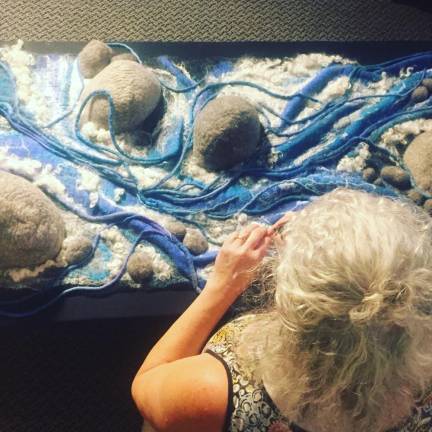
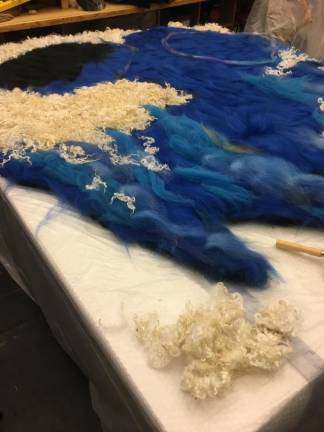
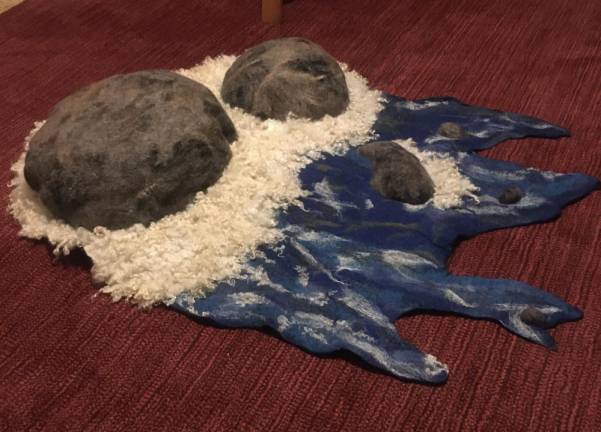
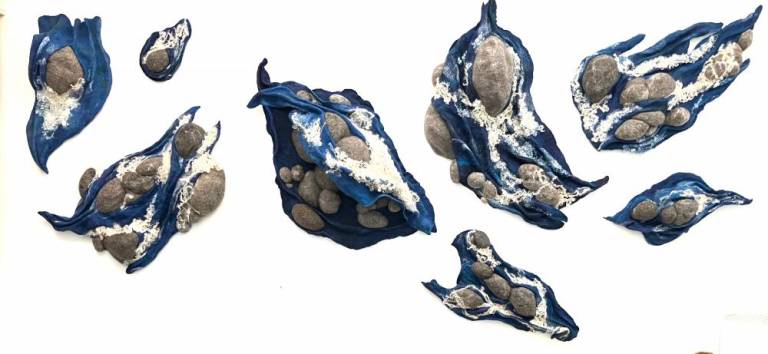
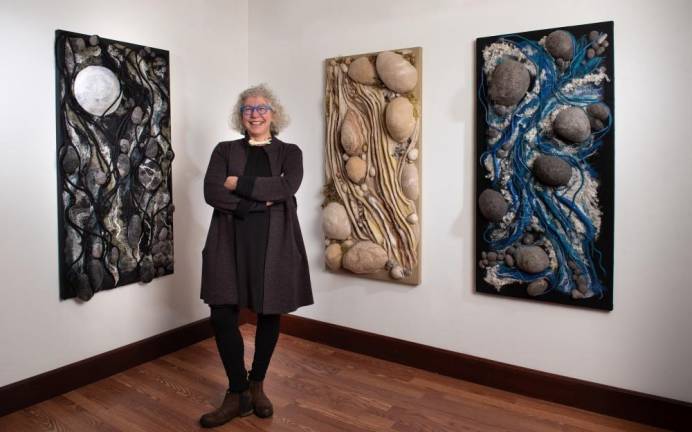
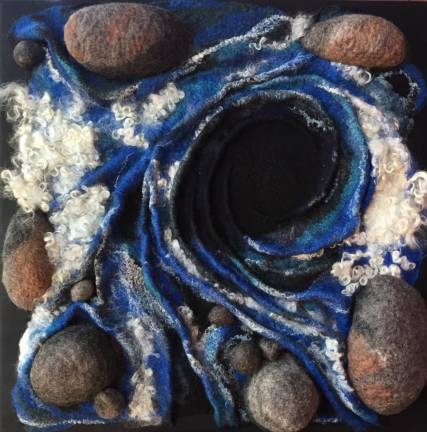
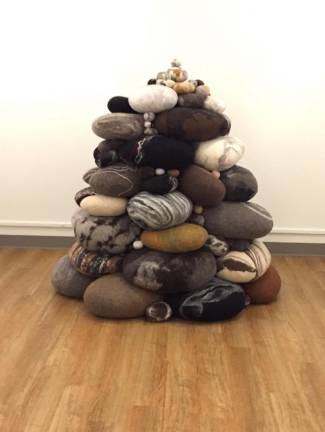
Our relationship with water is paramount to our survival. Although water is fundamentally transparent, tasteless, odorless and nearly colorless – thereby almost invisible as a thing – the magic and myth of water is that it is forever transforming between solid, liquid and gas. Among contemporary artists exploring the alchemy of water is Joy Muller-McCoola, whose work offers a compelling juxtaposition of the power of water as created through soft wool materials.
Born in the Bronx and raised in Long Beach, NY, Muller-McCoola was surrounded by salt water, counterintuitively experiencing drought conditions on occasion as a result. “When I was five there was a hurricane, and the water came above the boundaries of the canals. I remember fishing out the living room window,” she recalls. “These are early memories of having too much or too little water.”
Currently a resident of Glens Falls in Upstate New York, she sees the natural environment as a source of continued inspiration. “Water and stone are elemental materials found in the places that give me peace,” she said. “The stacks of stones surrounding my home echo that peace, but also provide rich metaphors for larger issues.”
Over a decade ago, Muller-McCoola began experimenting with wool as an art form during a class at LuckyStone Studio in the Glens Falls Shirt Factory. She fondly recalls spending an entire week making a felt beret that inspired her to consider the next phase of the material.
“It was exciting to have this new fiber medium that required no sewing,” she said. “Initially I reserved felting for myself and continued teaching ceramics, drawing and painting. Eventually wool worked its way into my classroom as well.” She had found her new focus: felting sheared wool into sculptures and large-scale installations, transforming this malleable medium into artworks that create an illusion of firm stone and solid environments.
Her current artworks employ wool from 12 breeds of sheep whose migratory history is like that of human beings. “The movement and relationships of people, time and the environment are subjects that I continually explore,” said Muller-McCoola.
Although the comfy and amusing appearance of her felted artworks are a pleasure to behold (and hold), they are also infused with serious undertones. “I use wet felting techniques incorporating wool, silk and trash to create works focusing on water and issues surrounding water, stones and land masses” she said. Her use of water in the actual felting process also influences the core of her creative praxis, and her artworks naturally reflect the movement of water as both the basis of human survival and a calamitous strength that is rapidly changing the profile of societies all around the planet.
Rising tides and soil degradation are never far from the artist’s mind. “Water is our life force and yet can bring destruction,” she said.
Through her art, Muller-McCoola considers the intensity of today’s geopolitical dynamics. “Aquifers are bought by foreign investors, flooding causes contamination, chemical farming leads to algae blooms, and poor land management leads to aridification,” she comments matter-of-factly.
These days, Muller-McCoola enjoys kayaking on the Hudson River around her home in addition to focusing on her art practice. “The Hudson connects my North Country home to the New York City area where I spent the first part of my life,” she said.
That a single, mighty but beleaguered river anchors her past and her present is fitting. “Water is essential and soothing,” she considers, “yet fraught with concerns.”